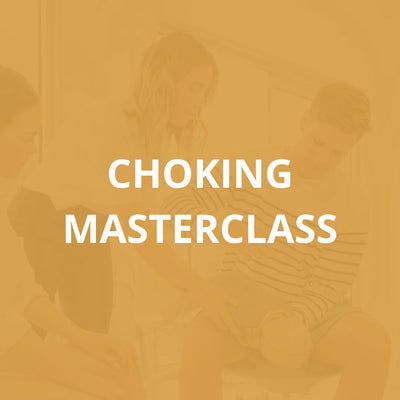Poisoning in Kids
Whether it is getting into grandmas tablets in her handbag or finding the chemicals under the sink. Poisons are everywhere, and you will be surprised just how many are in and around your house.
Did you know the most at risk age for child poisoning is under 5, with those between the ages of 1-3 being most at risk?
Did you know there is a dedicated number you can call in Australia if you think you or your child has been exposed to a poison? And it is a 24/7 number.
Did you know the most common poisonings in kids are from *things* around the house? With pharmaceutical substances being the number 1 cause of poisoning.
In 2019-2020 there were 10,800 hospitalisations due to accidental poisonings and 1,500 deaths across Australia! It can happen anywhere, anytime and kids are quick.
Put your chemicals away in locked cupboards, at least 1.5 metres above the ground level – out of sight out of mind.
Check out the information below discussing common poisons around the house and how to prep your house to prevent your little one needing a hospital admission.
When I think of poisoning I use to think, surely it does not happen that much – I mean who is going to drink bleach, or nail polish remover or take medication they are not meant to?
You know who?? Kids.
Why? Because they are inquisitive little explorers that love to put things in their mouth- that’s how they learn. Safe to say since working in the Emergency Department (ED) I have learnt there are many different ways a child can get their hands on poison and yes, they are keen to drink anything.
So what is poison?
Poison can be anything that is used incorrectly. It can be any household product or medication used incorrectly.
This can include:
• Drugs or medications. Think what you have in your handbag, leaving the bottle of paracetamol out on the kitchen bench, because you know you are going to need it again later or sleeping tablets or even vitamins next to your bed.
• Cleaning products. Detergents that usually live under the sink, bleach and drain cleaner in the laundry cupboard.
• Other chemicals around the house like petrol, alcohols, cigarettes, nicotine patches, or gardening supplies like pesticides.
Inhaling, swallowing, spilling onto skin, splashed into eyes or injected are the main ways poisoning can occur.
What are the top 5 most common ways a child can be poisoned?
1. Prescription and over the counter medications- like paracetamol, cough and cold medication, oral contraceptive pill and blood pressure medication.
2. Cleaning products/ dishwasher tablets or powder/bleach
3. Fertilisers and pesticides
4. Swimming pool and spa chemicals
5. Cosmetics including perfume and nail polish remover
And just because something has a ‘child resistant’ lid on it, does not mean it is child proof. It just means it might be harder for them to open.
What should I do if I think my child has been poisoned?
First things first. If your child collapses, stops breathing or has difficulty breathing or has a fit call an ambulance immediately on 000.
DO NOT induce vomiting. Depending on what has been ingested it can cause further damage.
Do not wait for symptoms to start.
Call the Poisons Information Centre on 13 11 26. They will give you first aid advice. This is a 24/7 number in Australia. Make sure your child is with you when you call and you have the substance bottle or container with you. Do not ring if it is a medical emergency, instead call 000.
Things to do at home
Poison on the skin- remove contaminated clothing, taking care to avoid contact with the chemical. Flood the skin with cool running water wash gently with soap and water and rinse well- Call Poisons Information Line 13 11 26
Poisons in the eyes- flood the eye with water from a cup, jug or slowly running tap. Continue for 10-15 minutes, holding the eye open. Call Poisons Information Line 13 11 26
Inhaled poison- get person to fresh air quickly without placing yourself at risk. Open windows and doors if safe to do so and call Poisons Information Line
Safe guarding your house - literally as I am writing this blog my inquisitive 9 month old crawled up to my cupboard under the sink and pulled out the dishwasher detergent- she is on the move, so time to put locked on these doors and put the poisons away.
How to reduce the risk for your child
• Remember child resistant containers are not child proof, just harder to open- but not impossible. Store poisonous products out of sight and reach, at least 1.5m off the ground in a lockable cupboard.
• If medication is stored in the fridge use a lockable container
• Use child resistant locks on cupboards containing chemicals.
• Once you have used your medication, put it safely away, and make a record of when you have administered it and how much- to reduce the risk of over dosing.
• Do not refer to medication as lollies.
• Keep handbags out of reach of children.
• Discard any unnecessary poisons and medications safely and as soon as possible
Death from poisoning is rare, however can require emergency treatment and admission in severe cases, in some cases permanent long-term damage. So keep your poisons up high and locked away, you might think you have your eye on your little one, but those cheeky babes are quick.
References
https://www.rch.org.au/kidsinfo/fact_sheets/Poisoning_Prevention_for_Children/ https://www.kidsafevic.com.au/home-safety/poisoning/ https://www.kidsafevic.com.au/wp-content/uploads/2019/09/poisoning_factsheet.pdf https://www.austin.org.au/Assets/Files/Poisoning%20advice%20pamphlet.pdf https://kidsafe.com.au/wp-content/uploads/2019/03/Poisoning-Information-Sheet.pdf https://www.aihw.gov.au/reports/injury/accidental-poisoning
Written on the 2nd of May 2022 by Laura, a Paediatric Emergency Nurse and mum of two little loves. As always, information on this website is for educational purposes only.
Please consult your GP for information specific to your child.
The quick thinking of Warrnambool parents Lucy and Pat Mahony saved their 18-month-old son Ollie from serious scars for life after he pulled a cup of coffee onto himself.
How do I check my baby’s temperature? 🤒 What is the best way to check a baby’s temperature? There are so many different types and brands of thermometers out there. What thermometer should I buy?
We're here to answer all your questions!
When our little loves are in pain, we want nothing more than to help them. This guide discusses common pain reliving medications that we can use to help alleviate their pain, as well as when and why we use them.









